Strona główna
Leopard 2A5 TTT and MSBS - A Part of the Śnieżnik System showcased at a Conference at the Military Institute of Armament Technology
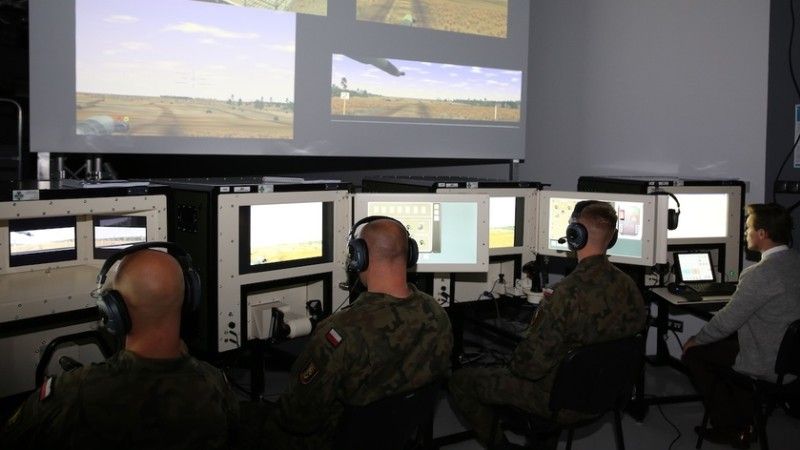
It seems that announcements made with regards to potential establishment of large and modern training facilities in Poland has been treated seriously by the Polish and foreign manufacturers. Zielonka, near Warsaw, became a venue where a conference took place, covering the domain of modern land component training systems. Foreign companies took part in the event too, however the domestic manufacturers showcased most of the innovative solutions.
The conference, known under the name “Innovative Technologies in Land Forces Training”, was organized by the Military Institute of Armament Technology and it was supported by the head of the Parliamentary National Defence Committee, MP Michał Jach. The event gathered important representatives of the defence industry and highly ranked land-forces officers, Chief of General Staff of the Polish Military, General Rajmund Andrzejczak, included. MP Michał Jach was also present, making the first speech. Head of the National Defence Committee expressed his satisfaction with the fact that many companies having a lot of know-how at their disposal conduct their business activities in Poland, remaining able to create simulation software and hardware. Jach was also surprised with the fact that not many of those entities sign contracts to create systems as such for the military. The Polish MP expressed his hope that this is about to change. “I would like to know the reasons for that” - Jach was pointing out his doubts. The fact that the causes are well known and that steps have been taken to change the above was reassuringly brought up by the Brig. General Jan Rydz, head of the Use of Armed Forces and Training Planning Management - P3/P7.
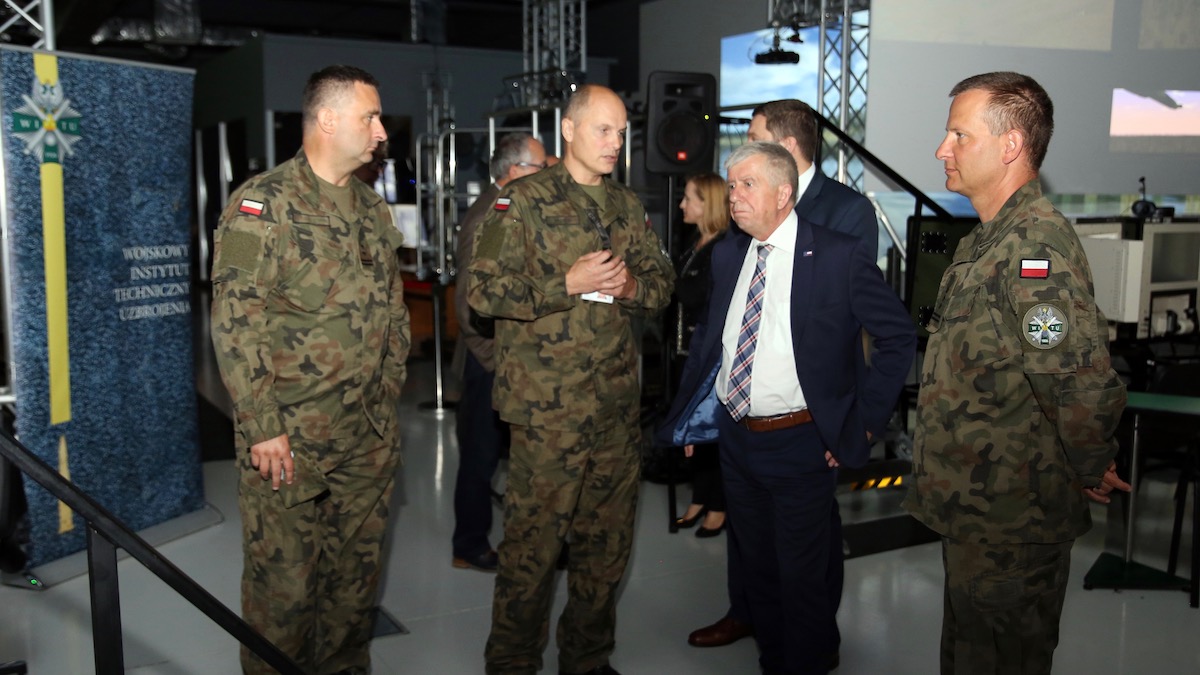
General Andrzejczak outlined the directions for development of training and simulation systems. Chief of the General Staff stated that Poland is a regional leader, with its population of 40 million and Armed Forces that involve 100 thousand men, with social support for the military. Thus, it should be acting accordingly. Introduction of innovative technologies shall be thus properly synchronized, Andrzejczak noted. The Armed Forces need to express their needs first, and then proper solutions should be proposed by the academia. Then, systems as such shall be delivered by the industry.
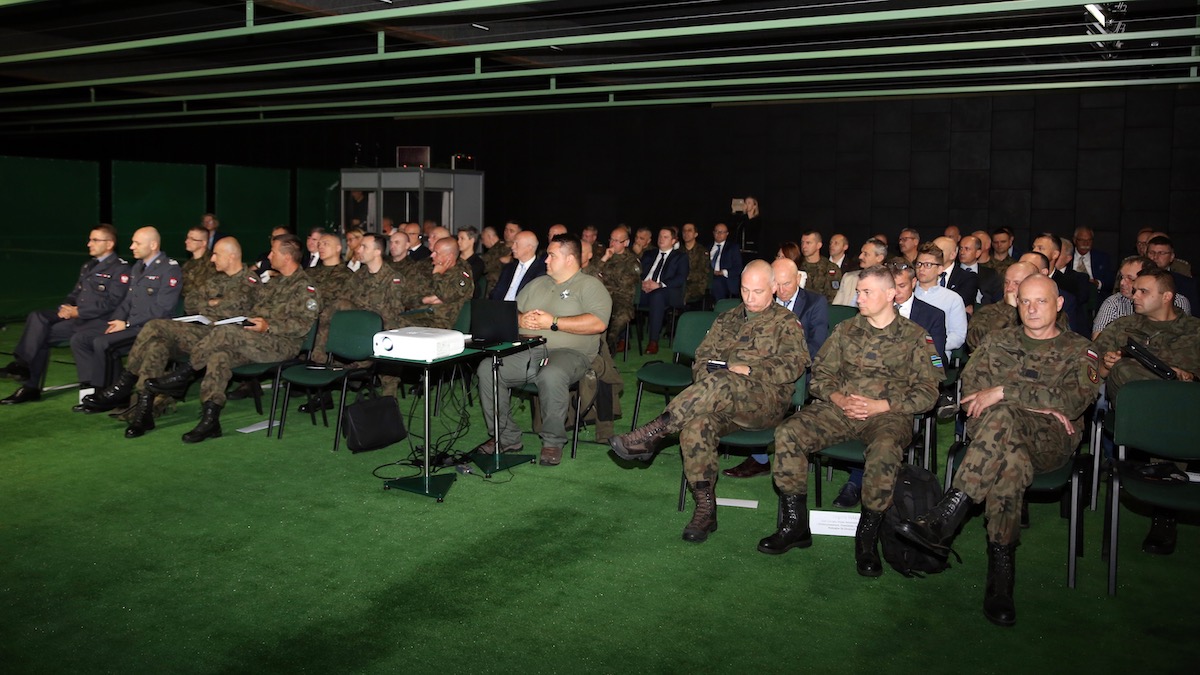
When getting ready for the future wars, the Poles should be able to define the conditions of that prospective warfare. Andrzejczak indicated the factors that would have impact on the future: the society growing old, the cyber domain, as well as the fact that 75% of the population would soon be living in the cities. Thus, urban scenarios should be treated as a priority, sea resorts included - naval/land aspect is also being taken into account. The Chief of Staff also indicated the growing importance of communication assets.
“The city is currently connected to the surrounding world with pipelines, highways, communication systems, datalinks, and so on. “The city, during the wartime, will still be connected - and this is of key importance for us. This is also the direction for further inquiry”, Andrzejczak said. He also referred to the 5G technologies that heighten the risks in the cyber domain also reshaping the environment in which the military would be working. The commander also referred to advancements in AI, robotics and electronic warfare. Furthermore, proper training systems should accompany the aforesaid evolution.
Brig. general Jan Rydz indicated that proper priorities shall be assigned to the training of land forces. “We have 35 battalions at our disposal, and if those cannot be defeated, never will the enemy accomplish his objectives associated with his operation against Poland” - he said. Rydz suggested that training of the reserves shall be treated as a priority by the Polish military academia.
This results from the specific nature of the Polish reserve structure - a lot of reserve assets remains available - thus the reserve forces shall be properly prepared. “The neighbours have increasingly greater ability to react and act without mobilizing their assets and this is why we need to prepare our reserves, so that, when fully deployed, we have full ability to fight” - he claimed. Thus, many, simple to maintain and inexpensive simulators should be made available to the reserve. They would also make the training process much more attractive.
General Rydz presented a chart, according to which training without the simulators may provide the soldiers with preparation at the level of 60 to 70% of the required proficiency. Meanwhile, 100% readiness may be reached, when simulators are used. Rydz said that simulator training provides the trainees with extra knowledge, also enhancing the speed and precision of the undertaken operations.
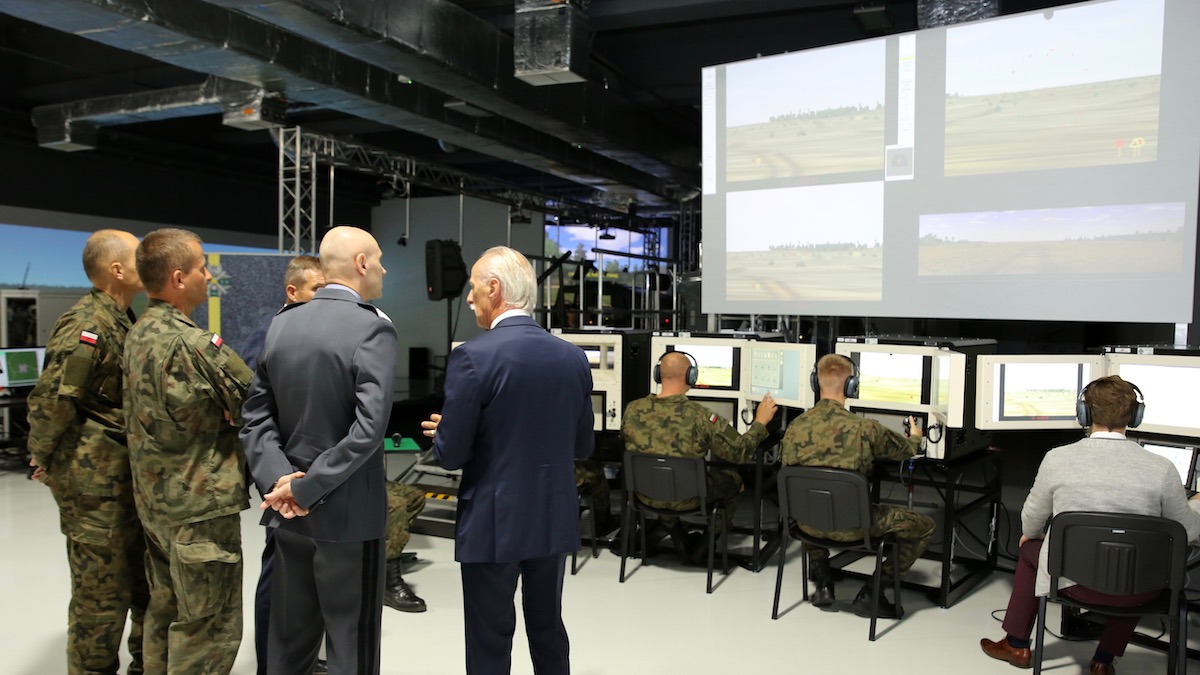
Savings are also a major asset here. For instance, during one of the training sessions in Switzerland, the Polish Leopard MBT crews fired rounds worth PLN 37.5 million (3600 shots) and covered a distance of 840 kilometers, thus using fuel for PLN 300 thousand. All of the above was taking place in the virtual reality though, with involvement of the ELSA II simulator. The General also described the estimations: up to 20 million zlotys can be saved per annum, in case of training activities organized for a single Polish main battle tank battalion.
Poland has 12 elements as such which translates into significant amounts of money - over 1 to 2 years the simulator assets would “pay for themselves”. These methods of training may also improve the qualitative dimension of the process thus creating an actual military advantage, or equalizing the level of training, since the Poland’s eastern neighbours are already making investments within that domain.
The conference also created an opportunity for a myriad of manufacturers to showcase their products in the simulation domain. Krauss-Maffei Wegmann Gmbh & Co. KG, RUAG and SAAB were among the entities involved.
Military Institute of Armament Technology also presented their products, including the Śnieżnik simulator system that has been used by the Polish military since more than a decade now. The Institute was co-creating the aforesaid solution jointly with Autocomp-Management. Mariusz Łuszczyk, PhD Eng., speaking about the solution, recalled the fact that 20 ŚNIEŻNIK systems remain active in Poland now. Łuszczyk also exemplified the savings created by Śnieżnik, using the statistics associated with this system used in Orzysz. Between 2015 and 2019 2 million virtual shots were fired there, including 119 thousand Mk-19 grenade machine gun shots and 20 thousand launches of RPG-7 rocket propelled grenades. Łuszczyk also announced that special variants of the system are available and they are offered by the Military Institute of Armament Technology and Autocomp-Management. Here he referred to the ŚNIEŻNIK-2 CQC system for instance. It is used to perfect the urban/CQB tactics. Same applies to the Hummvee gunner simulator, fast attack boat gunner simulator and helicopter door gunner simulator.
Śnieżnik undergoes continuous development, with new functions being implemented. It is also being integrated with more types of infantry armament, including the heaviest weapons, such as the GROM MANPADS, automatic grenade launchers or 120 mm mortars. Śnieżnik has recently been integrated with a device replicating the MSBS GROT assault rifle. This functionality is to be premiered during the MSPO 2019 defence industry exhibition in Kielce.
A simulator center using the Śnieżnik system is currently being established for the 12th Mechanized Brigade based in Stargard. The complex solution in question is going to be relatively expansive, however, it is also designed to accommodate training for a motorized company-sized element using the Rosomak vehicles. The system will also feature five simulator stations for Grom MANPADS operators and two stations for the ZUR-23-2KG anti-aircraft system crews.
The consortium working on Śnieżnik is currently willing to develop the existing systems, enriching them with new functions (M-120 mortar simulators, making it possible to train the infantry working together with mortar support or new ZUR-23-2KG stations). Modules simulating the Rosomak carriers and Rak self-propelled mortars are also available. “Proper technologies are available already, we only need an impulse to launch them” - Łuszczyk claimed.
The consortium proposes that large training centres should be established in Poland, including a division-level training centre that would allow for joint training of Leopard 2 MBT company and T-72/PT-91 MBT company. It is also possible to add in a Rosomak module or even a BWP-1 module there, making it possible to train joint vehicles-infantry tactics. Only a computer can act as the enemy here, with an option of introducing a human-adversary to be made available as an option - for an officer commanding the “red forces”.
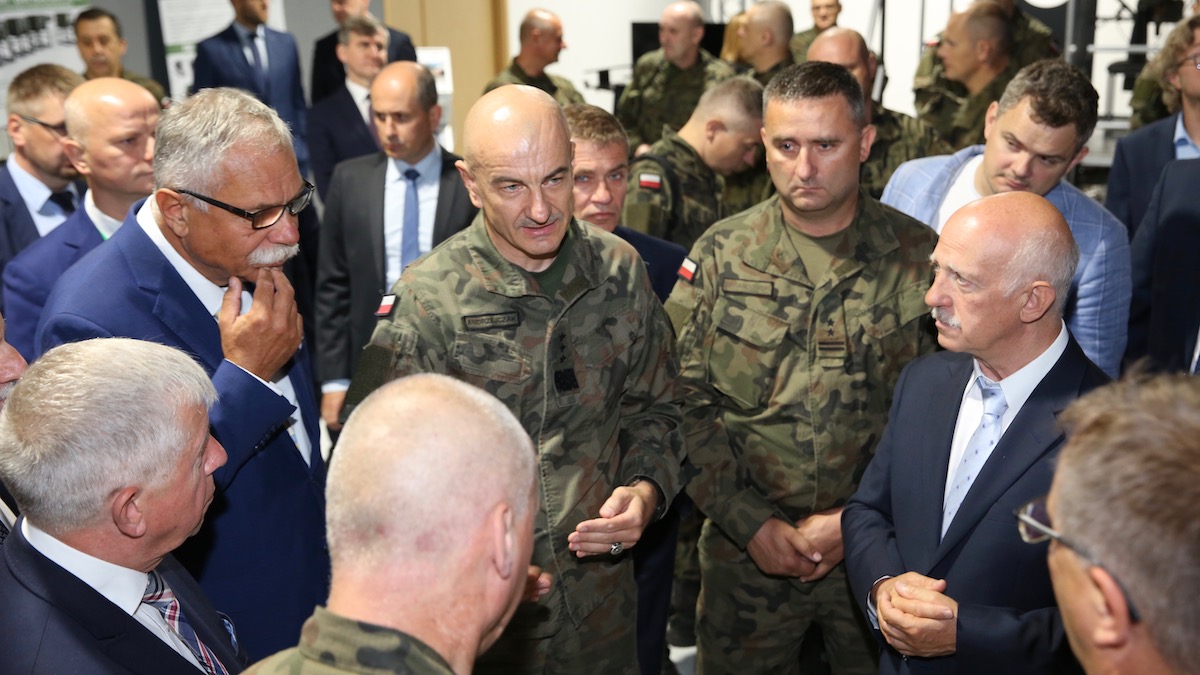
However, Leopard 2A5 table-top trainer solution demonstration was the main highlight of the program. It is the latest product of Autocomp-Management created jointly with the Military Institute of Armament Technology. It consists of five stations for four crewmembers and for the officer managing the training. Each of the systems comes in a form of a box put onto a frame that also constitutes a base and replicates the displays that remain at disposal of the individual crewmembers. Touchscreens are installed on the face of the individual modules. They may also feature side displays, on hinges. Apart from the terrain visualizations, the displays are also used to visualize interactive instrument panels that remain at disposal of the crewmembers. During the demonstration, Leopard 2A5 crew from the 1st Armoured Brigade based in Wesoła carried out a training/live firing from the Leopard 2A5. The crew also demonstrated a fragment of tactical defence training scenario.
The system is portable in its nature and it may be deployed and launched only by the crew using it. The whole kit is relatively light, small in size. It may also be transported with a small car. It is also simple to maintain and use. The operator stations may be synchronized into a single system with shared environment which means that several systems could be used to train a whole platoon, company or battalion level element. The technologies derived from the Leopard TTT may also be used to create counterparts of that system for the PT-91 Twardy or T-72 main battle tanks or other combat vehicles.
The concept of this system that has already been ordered was spoken of highly by General Andrzejczak. The Chief of Staff also emphasized the importance of mobile profile of the training, and the ability to scatter it around a number of locations. This will make it possible for the soldiers of the individual units to train and cooperate, or even fight against each other, without leaving their home bases and moving around the country. Andrzejczak said that this is far more important that establishment of large, centralized facilities.
